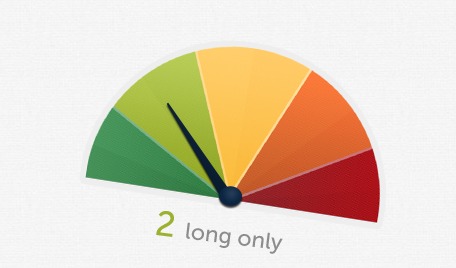The overwhelming consensus view heading into 2014 was that interest rates were finally heading higher, giving income investors the opportunity to earn more yield from bonds.
However, rates have actually moved lower so far this year. Yields on the 10-year Treasury note have dropped from about 3% to 2.7%.
So it’s still tough to find yield in this low-rate environment. Investors want income but they remember the painful lessons of the financial crisis, in particular the danger of reaching for yield with riskier investments.
For instance, a fund or security may be paying double-digit yields, but it’s not always easy to clearly understand the potential risks. History has shown this is a dangerous pitfall for investors.
Covestor’s online marketplace of investment managers includes several portfolios that focus on yield and income. The trades that managers make in their portfolios are automatically replicated in investors’ own fully transparent brokerage account.
Also, Covestor’s Investment Management team screens and conducts due diligence on portfolio managers before they ever join the platform, and every portfolio is assigned a risk score between 1 and 5 that is continually monitored. This helps investors gauge how much risk they are potentially taking on with their income investments. Covestor’s risk scores are designed to help investors find the right balance between their goals and their tolerance for risk.
Investors looking for yield and income have several choices among managers on Covestor, and the portfolios are ranked by risk. For example, portfolios with a relatively low risk score of 2 might focus on investment-grade bonds with low historical price volatility. On the other hand, portfolios with higher scores of 4 or 5 may invest in higher-risk asset classes such as equities and Master Limited Partnerships (MLPs).
Here are some options that income-oriented investors might consider, grouped by risk scores:
Risk Score 2
-
Dynamic Income Portfolio managed by Julex Capital Management: A multi-asset strategy that seeks to outperform the Barclays U.S. Aggregate Bond Index with comparable volatility and lower peak-to-trough drawdowns.
-
Diversified Target Yield Bond ETFs Portfolio managed by Rahul Diddi: Seeks consistent income by investing in a diversified portfolio of income-generating exchange traded funds and closed-end funds, across a wide range of fixed income asset classes. The portfolio targets an average single-A-rated pool of bonds including government bonds, corporate bonds, and other fixed income securities.
-
Income Portfolio managed by Island Light Capital: Designed for long term investors seeking current income and some potential for long term capital growth. The Portfolio is targeted to a benchmark allocation of 60% fixed income investments and 40% global equities.
-
Taxable Income Portfolio managed by Dan Plettner: Tries to outperform diversified bond benchmarks on a total return basis.
-
Stable High Yield Portfolio managed by John Gerard Lewis: Invests in income-producing securities with an eye on maximizing long-term total return while mitigating volatility.
Risk Score 3
-
Dividend Paying Large Caps Portfolio managed by Libardo Lambrano: Invests in dividend-paying large capitalization stocks, with the goals of long-term capital growth and current income.
-
Buyback Income Index Portfolio managed by David Fried: Comprised of income-generating companies that are buying back their own shares and meet specific fundamental criteria.
-
MLP Direct Ownership Portfolio managed by Dan Plettner: Seeks to offer the long term tax advantages and income opportunities of investing in Master Limited Partnerships.
-
Yield Multi-Manager Portfolio: A “bundled” portfolio of managers selected by Covestor’s Investment Management team. The Yield Multi-Manager Portfolio offers exposure to multiple strategies that target higher income than the stocks in the S&P 500. It is designed to perform similarly to an individual portfolio with comparable risk profile to the broad equity markets. It targets a yield that is higher than the dividend yield of the S&P 500.
Risk Score 4
-
Macro Yield Portfolio managed by Dickenson Bay Capital: Comprised mainly of yield-focused instruments to generate income and meet capital preservation objectives. In addition to fixed income securities, investments may include other yield securities such as preferred and trust preferred shares, and common shares.
-
Dividend Portfolio managed by Analytic Investment: Buys and holds about 50 dividend stocks using multiple valuation factors such as cash flow and payout ratio. It seeks to potentially outperform the S&P 500 index on an annual basis with a lower level of volatility.
-
MLP Protocol Sprint Portfolio managed by Philip Trinder: Invests in smaller, riskier MLPs to potentially capitalize on their potential for higher yields and overall total returns.
-
Sustainable Dividend Growth Portfolio managed by Hrvoje Sajkovic: Seeks to offer above-average income for its investors, as well as a degree of capital appreciation. It strives to offer consistent returns and a low level of volatility over time. It mainly invests in high yield stocks with a two-year history of consistent dividend payouts.
-
Tactical Fixed Income Portfolio managed by Analytic Investment: Invests in fixed-income securities using stringent risk controls. It seeks to achieve above average yield and strong risk-adjusted return potential.
DISCLAIMER: The information in this material is not intended to be personalized financial advice and should not be solely relied on for making financial decisions. All investments involve risk, the amount of which may vary significantly. Dividends reflect past performance and there is no guarantee they will continue to be paid. REITs are subject to credit and interest rate risks, as well as risks associated with small- and mid-cap investments. Investments in MLPs include the risks of declines in energy and commodity prices, decreases in energy demand, adverse weather condition, natural disasters, and changes in tax laws. ETF shares trade like stocks, are subject to investment risk and will fluctuate in market value. Past performance is no guarantee of future results.
Download our free iGuide: Generating Income in 2014




